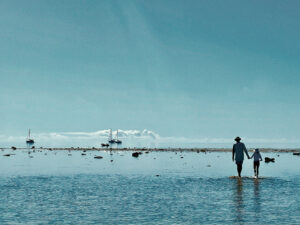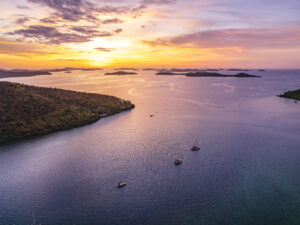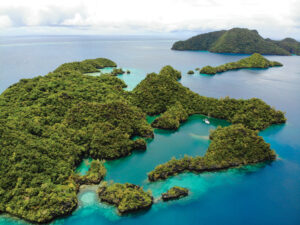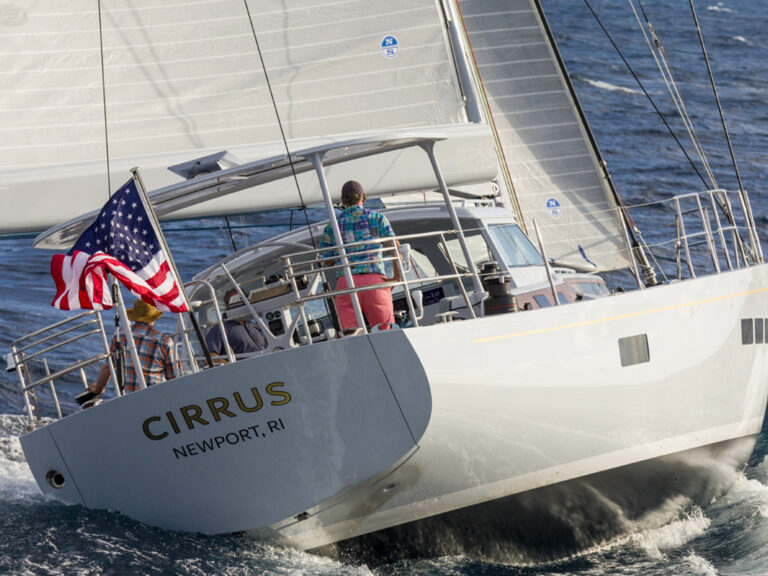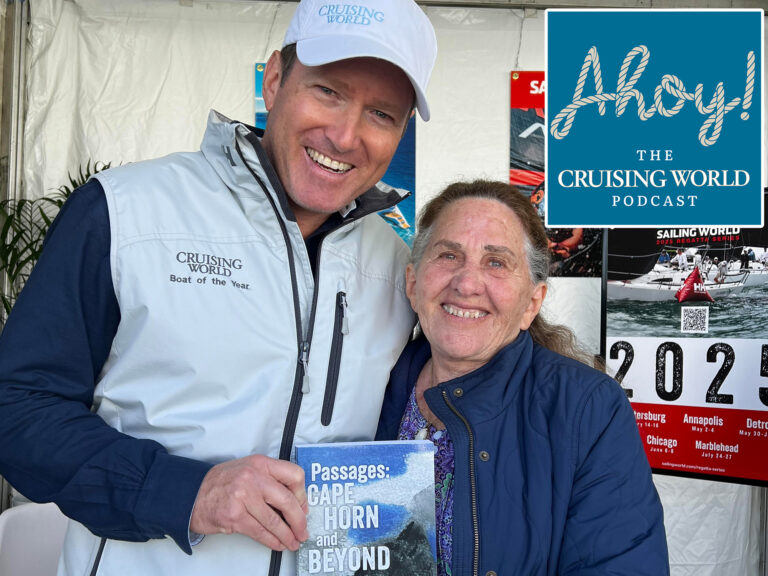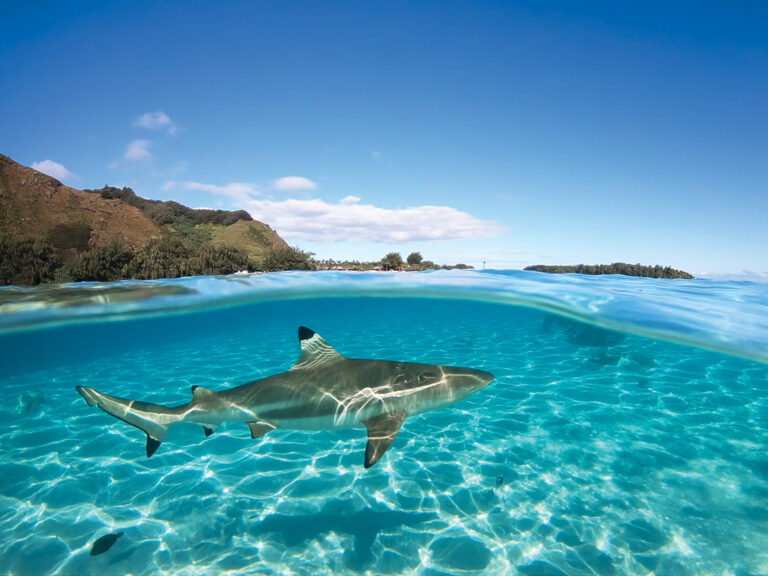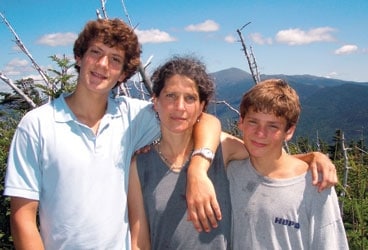
tania and sons 368
My mother died of cancer when she was only 40 years old. At the time, I was 19 and alone on my sailboat in Tahiti, with three-quarters of the world to go before I’d complete a solo circumnavigation. That was 20 years ago. When I turned 40 myself in October 2006-in the Green Mountains of Vermont-a sense of urgency began to peck at me. When the roosters out back in the henhouse start pecking, they can become coq au vin. But I couldn’t rid myself of this pecking as easily. It was time to take stock.
Like my mother, I was divorced. I was now mother to two teenage boys she’d never met. Funny, I’d never imagined getting this far, and suddenly here I was, having reached a juncture that opened up onto a whole new future.
My ex-husband was 54; Nicholas, my eldest son, was 16; Sam was 13. My typical teens were taller than I was, their voices had deepened, they knew big words, and I no longer understood the math they brought home. My sons and I were rapidly approaching the day when our relationships would be reduced to occasional visits home for Thanksgiving dinners and beds with clean sheets. My mothering days were almost over, and so was the time we had left for the big anything-can-happen-and-we’ll-deal-with-it-when-it-does cruising adventure that I’d always wanted to have with my boys. The thought began to obsess me: If I didn’t do it now, it would never happen.
The kids had grown up with the tale that had shadowed me through the years, and it inspired my dream for them. They always knew how a family cruise when I was 16 had led to the purchase of a Contessa 26 sloop for the well-publicized solo circumnavigation I’d undertaken between the ages of 18 and 21. The Trip was subsequently called “brave and romantic,” “a spiritual quest,” and “a coming-of-age story.” Out there, I’d learned about an existence that relied upon not stuff but resilience and resourcefulness.
Punctuated by periods of abject fear, utter joy, and everything in between, I’d experienced what it meant to make a commitment, to set a goal and reach it. Out there, I’d lost my mother and, several months later, had found a cat, Tarzoon, and a husband, Olivier-both on the same South Pacific island.
From the moment I stepped back ashore in New York City, where the trip began and ended, I’d been telling this story. The kids had yawned through it and politely answered questions about their parents countless times; at the repeated requests of teachers, they and all their friends and classmates, in every school they’d attended, had seen The Slide Show.
While rushing toward and past their own milestones, from bassinets to double-sized futon beds, the boys snuggled with Tarzoon and kept brushing by the pictures hanging on the staircase wall: my boat, Varuna, getting swamped by a wave; Varuna anchored in a bay framed by lush tropical foliage; Varuna floating on a flat-calm sea next to the 31-foot Akka, their father’s boat-he’d sailed his boat around the world as well. Carvings, fabrics, and other memorabilia from both our trips cluttered the shelves between different editions and translations of the book I’d written that had steadily worked its way through several printings. The boys read it for book reports and for ammunition to prove that as children, they were better behaved than I was. They’d barely look up from their Legos, homemade wooden guns, and Calvin and Hobbes collections as I packed up The Slide Show and took off to speak to various groups and organizations around the country. They were proud of Tarzoon, however, and loved hearing him described as the cat that had sailed halfway around the world. Tarzoon was cool. Otherwise, for them, the stories their parents told were always there in the background as a historical presence-seen but not really seen, like yellowing wallpaper hidden by furniture.
They knew all about their grandpa’s influence: how my father had sent me off to sea because-as he told them over and over again-I was such a creepy teenager he had to do something to get me off my unmotivated butt. They knew it was now their turn to fall short in his eyes, because they weren’t hitchhiking cross-country at the age of 12, like he did, or building rafts and floating down rivers, like he did, or biking 15 miles, one way, to tae kwon do class three times a week, like he would’ve done, instead of having Mom drive them everywhere. They also knew how to laugh off these comparisons as heroics-driven storytelling and imagination fodder, that he meant well and might even be partly right. But when he was done using his own colorful exploits as exaggerated examples of what we’re each capable of doing, given the desire, they returned to another book about some other hero’s struggles. They liked listening to and reading great stories; they didn’t feel compelled to act them out.
In spite of their heritage, the boys were perfectly content to be armchair dwellers, and I stood on the sensibility continuum somewhere between them and Grandpa. I enjoyed a comfortable armchair myself, along with the predictable routine of the life I’d carved out for myself in the Vermont hills, all programmed by my going back to school and earning degrees, then doing laundry, writing, cooking, gardening, and raising chickens as part of my responsibilities as the manager of a house, land, and a family all nestled within a stable community. However, 20 years of empathizing with the tragedy of my mother’s too-short and unhappy life-and of being poked and prodded out of my father’s idea of complacency-had conditioned me to think that at some point, before I settled in too deeply, it was my maternal duty to drag myself into a plan of action that was grander than the workaday-and to bring the kids along.
Ever since they were babies, pulling together some kind of cruise ranked high on my list of things that needed to happen someday. Because their parents sailed to put food on the table-I ran chartered flotillas in different countries; their father was a delivery skipper-this eventuality always seemed a certainty. As the boys spent their entire childhoods romping among the inland hills where we lived-because being able to afford 32 acres anywhere near the sea was out of the question-I’d dreamed of taking them on a voyage of discovery across oceans, opening their eyes to a little piece of what had been such an invaluable part of my education. Such a trip seemed inevitable, even their birthright. I talked about it a lot, and not just to them. All along, readers, friends, family, and, often, complete strangers believed me when I said that a trip would happen, which was a good way to keep me believing that I could pull it off.
The only cheap thing about kids and boats is talk. Suddenly, I woke up one morning last year from an anxiety dream about missed airplanes and realized that I was never going to be rich, that my eldest was getting old, and that I was running out of talking time. If I didn’t make something happen soon, we’d miss the boat, and both kids would be adults and talking their own cheap talk while I lived with regrets for what we’d never got around to doing. But whenever I seriously tried to bring up the idea of taking them out of school and initiate a nuts-and-bolts conversation about a potential cruising plan at the breakfast or dinner table-which always ended with my comments on their ambivalence-the not-so-little runts laughed and said, “Yeah, right, Mom. Like that’s really gonna happen.”
How could they not believe me? Was it possible these swabbies were clever enough to be playing with reverse psychology, that if they acted like they didn’t believe it’d happen, I’d rise to the challenge? Or did they just not care? Whichever way the predicament was parsed, there was no getting around the fact that I was doing the dreaming and talking alone-and finding it difficult to stay the course. By then I’d been divorced for seven years, and both boys knew their parents hadn’t been able to agree on even the choice of 2-percent or whole milk while they’d lived under the same roof. Now that we were separated by two miles and a structured schedule that accommodated two incompatible people whose only shared desire was that each of them wanted to be with the kids on a regular basis, the boys couldn’t imagine the chances were very good for us to come up with a big cruising plan together. Neither could I. We rarely even talked about ordinary life details. How could we ever work together toward the extraordinary? At the outset, this seemed like the biggest obstacle. But the sense of urgency that overwhelmed me when I passed the anniversary of my mother’s death and then started looking at the other side of 40 myself pushed me toward finding a viable solution.
There were many detours into the impossible and unsolvable before I figured it out. Their dad and I would have to split the trip. It wouldn’t be easy for me to give up substantial time with the kids, but fair’s fair, and the months spent mainlining them with lifelong lessons and memories would fly by. I’d organize a homeschooling program and take them out of school for a year. Then, weaving between hurricane seasons on two oceans, I could do the first five months with the boys, from the Caribbean to French Polynesia, and their father could do the next five months with them, from French Polynesia to Australia. Yes, that could work. How could Dad not agree?
Chinese philosopher Lao Tzu says that a journey of 1,000 miles begins with a single step. Just over a year ago, I summoned up the nerve, and my ex and I got together for tea with 2-percent milk at his house. I described the plan to his back as he wandered about the kitchen he’d built, looking out the windows at his gardens, studying his view of hills to the south. I knew he was thinking that if he weren’t getting paid to run a boat, he’d prefer to be home with his workshop, his tools, and his comfortable routine.
“I like the couch, too,” I said. “But we have to do this for the kids and for ourselves. I’ll get the boat and do the first half. We’re talking about the South Pacific after all. Remember? How you spent a month anchored off Maria, snorkeling, eating langoustes, and looking for black pearls? Remember how much you loved that? Wouldn’t you like to be able to do that one more time, with your boys? You could take them to Vanuatu and show them where we met in the days when we still wanted to do something like this together. God, that was 20 years ago. Look how fast they passed. Five months. It’s nothing.”
I held my breath. He grunted several times, paced, and muttered something about getting a junk and sailing the China Seas instead. Then he agreed to let me find and outfit a boat and get it to Tahiti, whereupon he’d take over.
“So it’s a plan,” I said. “We’re doing it. No turning back, right?”
He grunted another something that was as close to an affirmative as he ever got with me, then started clearing the table, indicating that the chat was over.
That night over dinner, I told the runts about our conversation. They stopped cuffing each other on the head long enough to laugh at me again. Alrighty then. I looked up at the map of the world that hung above our kitchen table, at the string of all those place names they’d one day identify with real memories. I’d show them-if I could get past the next step: I needed to find a boat.
One year later, after multiple trips to the Caribbean, hours devoted to online searching, and crawling through the filthy bilges, grotty lockers, rusty engines, mangled wiring, and tired rigging of the inhabitants of the used-boat market down at my end of the budget spectrum, I found my Shangri-La. Literally. Her name is Shangri-La, a 36-foot steel boat built in South Africa, launched in 2000, and outfitted with more equipment than I know how to use. She has a pedigree: Her two former owners sailed her into the Indian Ocean, down to Antarctica, around Cape Horn, and back north to Sint Maarten, where she was put up for sale. There our wakes crossed.
In March, I found myself with the boat-and all the work, anxiety, learning, and endless decisions that are part of the package. In April, along with one son, a neighbor’s son, and a friend, I sailed her from Sint Maarten down to Curaçao-a successful shakedown, and my first offshore passage in 13 years. I left her there for the 2007 hurricane season and returned to batten down the home that felt dearer, safer, and more comfortable with every day as we got closer to our September departure. Back in Vermont, I made sure the propane tanks would be filled so the pipes wouldn’t freeze. I found someone to manage the bills and paperwork, somebody else to take the plants, somebody else to board the laying hens. There was no turning back.
And finally, there was Tarzoon. He’d started life with me on Varuna. But now he was way too old to end his days with us on Shangri-La. Who would care for him? How would he take to an alien environment without us? What if he died while we were gone?
Each time I passed him sleeping on his chair, the dilemma of what to do with my oldest friend, the one who’d most reliably accompanied me through my entire adult life, tightened the ever-present anxious knot in my belly. Then, on August 19, exactly one month before I’d planned to be on the plane heading south with all my bags, just a little over 21 years after I chose him out of a litter at a dairy farm in Vanuatu, as if he knew and wanted to take care of me one last time, he went to sleep in his chair and didn’t wake up. Now there’s a new mound-capped by a cairn-at the edge of the field in front of my house.
This year, 2007, marks another 20th anniversary. In 1987, I finished the circumnavigation that in some ways would define my life, and I began to try to answer the series of “What now?” questions that led to the story you’re reading now. I’m spending time these days making all the final decisions and preparations for life’s next chapter, worrying over lists and checking things off. If all goes well, by next year the boys and I will have covered almost 6,000 miles of the same oceans my 18-year-old self sailed while my mother was dying and my life was beginning.
Look for articles by Tania Aebi in future issues of Cruising World. To read Tania’s twice-monthly entries in The Log of Shangri-La, visit the BoatU.S. website (www.BoatUS.com/cruising).
For the next part of this series see “A Canal Transit, A Ticking Clock” from our April 2008 issue

